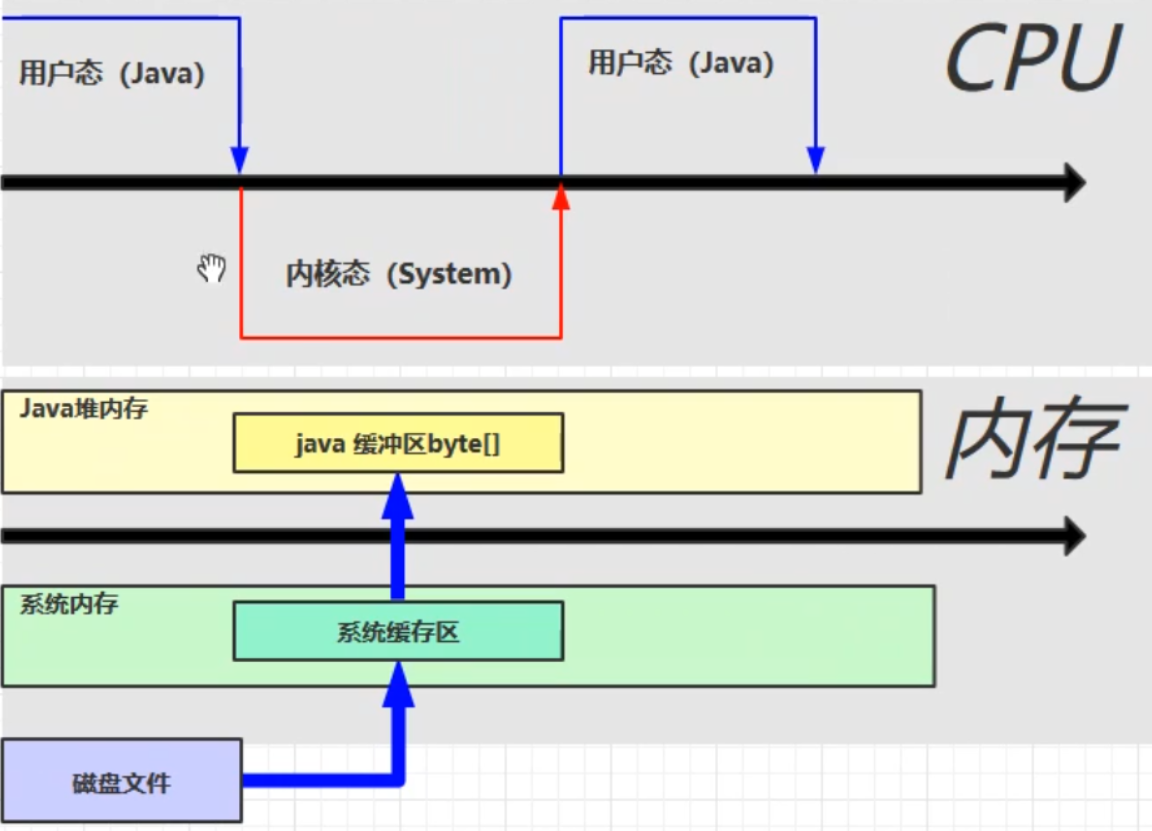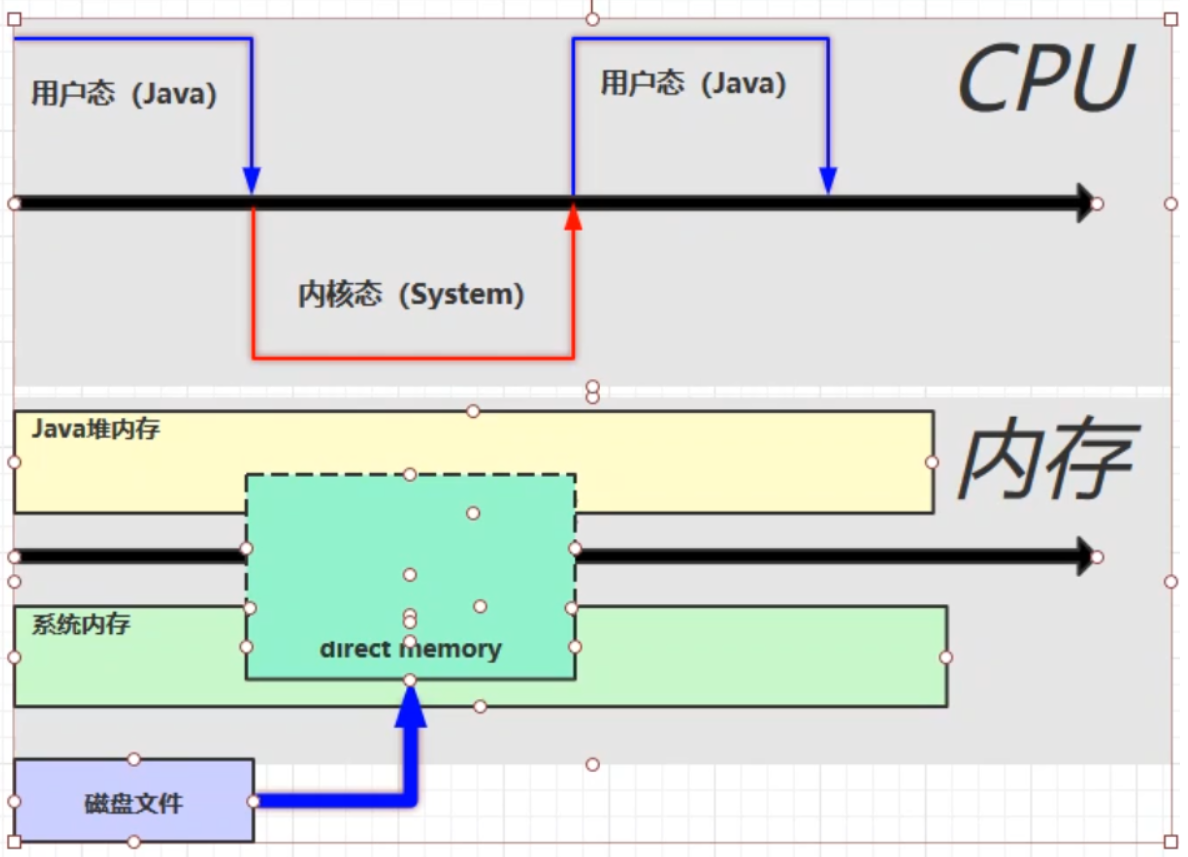深入理解JVM(三)—— 内存结构(三)
6、直接内存
- 属于操作系统,常见于NIO操作时,用于数据缓冲区
- 分配回收成本较高,但读写性能高
- 不受JVM内存回收管理
文件读写流程

使用了DirectBuffer

直接内存是操作系统和Java代码都可以访问的一块区域,无需将代码从系统内存复制到Java堆内存,从而提高了效率
释放原理
直接内存的回收不是通过JVM的垃圾回收来释放的,而是通过unsafe.freeMemory来手动释放
通过
//通过ByteBuffer申请1M的直接内存
ByteBuffer byteBuffer = ByteBuffer.allocateDirect(_1M);
申请直接内存,但JVM并不能回收直接内存中的内容,它是如何实现回收的呢?
allocateDirect的实现
public static ByteBuffer allocateDirect(int capacity) {
return new DirectByteBuffer(capacity);
}
DirectByteBuffer类
DirectByteBuffer(int cap) { // package-private
super(-1, 0, cap, cap);
boolean pa = VM.isDirectMemoryPageAligned();
int ps = Bits.pageSize();
long size = Math.max(1L, (long)cap + (pa ? ps : 0));
Bits.reserveMemory(size, cap);
long base = 0;
try {
base = unsafe.allocateMemory(size); //申请内存
} catch (OutOfMemoryError x) {
Bits.unreserveMemory(size, cap);
throw x;
}
unsafe.setMemory(base, size, (byte) 0);
if (pa && (base % ps != 0)) {
// Round up to page boundary
address = base + ps - (base & (ps - 1));
} else {
address = base;
}
cleaner = Cleaner.create(this, new Deallocator(base, size, cap)); //通过虚引用,来实现直接内存的释放,this为虚引用的实际对象
att = null;
}
这里调用了一个Cleaner的create方法,且后台线程还会对虚引用的对象监测,如果虚引用的实际对象(这里是DirectByteBuffer)被回收以后,就会调用Cleaner的clean方法,来清除直接内存中占用的内存
public void clean() {
if (remove(this)) {
try {
this.thunk.run(); //调用run方法
} catch (final Throwable var2) {
AccessController.doPrivileged(new PrivilegedAction<Void>() {
public Void run() {
if (System.err != null) {
(new Error("Cleaner terminated abnormally", var2)).printStackTrace();
}
System.exit(1);
return null;
}
});
}
对应对象的run方法
public void run() {
if (address == 0) {
// Paranoia
return;
}
unsafe.freeMemory(address); //释放直接内存中占用的内存
address = 0;
Bits.unreserveMemory(size, capacity);
}
直接内存的回收机制总结
- 使用了Unsafe类来完成直接内存的分配回收,回收需要主动调用freeMemory方法
- ByteBuffer的实现内部使用了Cleaner(虚引用)来检测ByteBuffer。一旦ByteBuffer被垃圾回收,那么会由ReferenceHandler来调用Cleaner的clean方法调用freeMemory来释放内存